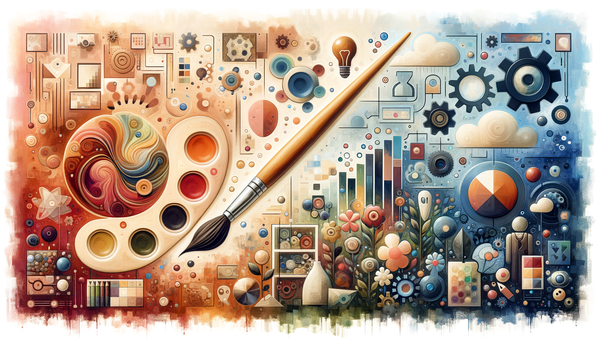Latest Developments in AI: Research, Regulation, and Innovation

The surge of AI is rewriting the rules across industries—from record-breaking executive pay driven by market excitement to playful innovations in voice interfaces that transform how we interact with our devices.
AI's Impact on Corporate Finance and Innovation
Witnessing a record $19.8 million payday for SAP’s CEO Christian Klein is a vivid reminder of how artificial intelligence is not merely an operational tool but a transformative market force. As AI propels technology stocks to new heights, corporate leaders find themselves rewarded for spearheading innovations that catch the market’s eye. The impressive rise in SAP’s shares underscores the direct correlation between advanced digital initiatives and shareholder confidence.
This phenomenon isn’t an isolated episode. As highlighted in various analyses, including our in-depth discussion on AI innovations, companies are leveraging AI to boost productivity, unlock new revenue streams, and enhance overall market performance. Not only does the corporate realm fetch record paydays, but AI's widespread adoption also transforms products and services—a sentiment captured by recent breakthroughs in AI market moves.
It is interesting to consider how technology leaders such as Satya Nadella have remarked:
“We are entering a new phase of artificial intelligence where machines can think for themselves.”
Though this quote evokes visions of sentient machines, it also mirrors the strategic outlook of today’s executives. The excitement around AI, however, is not without its dilemmas—as we’ll see with Nvidia’s divergence on priorities.
Balancing Innovation with Customer Commitment: The Nvidia Conundrum
Nvidia’s sky-rocketing revenue, exceeding $130.5 billion driven by a 114% leap from the previous year, showcases the incredible financial windfall accruing to firms in the AI chip segment. Yet beneath these blockbuster figures lies a more nuanced story. Gamers, once the bedrock of Nvidia’s reputation, are finding themselves sidelined as resources and manufacturing focus shift towards producing chips that fuel artificial intelligence.
The reality is that while the AI revolution is capturing the market’s attention today, it has also inadvertently left behind long-time product enthusiasts. With the launch and subsequent shortages of the RTX 50-series GPUs, gamers face frustrating delays and premium pricing. The tension between catering to emerging applications of AI and upholding legacy commitments in gaming has rekindled debates about brand loyalty versus innovation.
This balancing act is a recurring theme seen across the tech landscape. For instance, our readers have explored similar dichotomies in our feature on Apple’s evolving AI ambitions, where innovation sometimes comes at the expense of user familiarity. Nvidia’s situation is a contemporary example of this challenge—a reminder that rapid technological progress may sometimes overlook the foundational user experience.
Revolution in User Interaction: The Case of Perplexity and Teleperformance
In a move indicative of AI’s potential to enhance our daily interactions, Perplexity’s update for its iOS app marks a significant evolution in the way text-to-speech technology is experienced. No longer confined to robotic or monotone voices, the new update introduces six fresh, engaging voices that resonate more naturally with listeners. Such innovations bridge the gap between human and machine, making interactions with technology feel more personal and accessible.
Beyond improved tonal quality, the revamped voice mode also harnesses real-time search capabilities, providing users with live results and integrated citations. It’s a clear statement that in today’s fast-paced world, expertise and immediacy go hand-in-hand. As the tech landscape continues to mature, these blended functionalities blur traditional boundaries, merging voice assistance with dynamic search—a new pathway in personalization and utility.
On a different yet equally compelling note, Teleperformance has turned its focus towards modulating voice accents to ensure clarity in customer communication. Specifically, the use of AI to neutralize Indian accents in call centers is an effort to minimize misunderstandings in global customer interactions. While this approach has its share of debate over cultural identity, it serves as an intriguing example of how AI is being wielded to tailor communication in highly nuanced ways.
In both instances, whether in enhancing everyday gadgets or optimizing customer service experiences, the transformative potential of AI is undeniable. These initiatives can be seen as stepping stones to creating more dynamic, responsive tech ecosystems that elevate user engagement.
Transforming the Travel Industry with AI
The travel industry is undergoing its own silent revolution. Imagine booking a trip and having an intelligent agent manage every detail from flight reservations to hotel check-ins—all without the need to juggle multiple platforms. Companies like Kayak and Sabre are leading this charge. By deploying AI-enabled travel assistants, they are streamlining the once fragmented and cumbersome travel booking experience.
Kayak’s anticipated launch of AI agents that manage bookings by interfacing directly with users epitomizes how AI can simplify life for travelers. Automation does not replace human decision-making but rather augments consumer confidence by offering tailored choices with verified, real-time data. Similarly, partnerships like that of Tripadvisor with Perplexity AI, already serve to enhance trip planning by harnessing vast repositories of review data—illustrating AI’s power to transform industry fundamentals.
Such innovative approaches resonate with broader trends in technology, as earlier explained in our discussion on AI innovation trends. They highlight the shift from traditional models to a more integrated, data-driven paradigm where efficiency and personalization coexist harmoniously.
Specialized AI Solutions for Regulated and Secure Environments
The impact of AI extends far beyond consumer conveniences and entertainment—it is reshaping the landscape in highly specialized fields that demand precision and compliance. You.com’s launch of its AI Research Agent, targeting regulated industries, symbolizes the breakthrough in harnessing artificial intelligence for the critical task of regulatory navigation. In sectors where accuracy and compliance are non-negotiable, an AI-driven solution can make the difference between success and costly mistakes.
By streamlining data retrieval and analysis while ensuring regulatory adherence, tools like You.com’s Research Agent provide an essential service in industries ranging from finance to healthcare. This move demonstrates the potential of AI to not just enhance operational efficiency but also to safeguard compliance—a reflection of its increasing integration into decision-making processes at the highest levels.
Security, too, is an arena where AI is making indelible marks. Archipelo’s emergence with its $12 million funding round spotlights the security challenges arising from the dual demands of human- and AI-generated code. As code becomes more complex and intertwined with machine learning workflows, the need for robust security measures has never been greater. Archipelo’s platform aims to monitor and secure code pre-deployment, curbing the risk of breaches that could stem from human error or algorithmic inaccuracies.
The emphasis on security in coding processes, and the associated funding breakthroughs, validate the argument that AI isn’t a monolith confined to efficiency—it also champions safety. This dual stride towards innovation and protection is echoed in our broader narrative of market moves where the realm of AI continuously adapts to emerging challenges.
Realities and Reflections in the Age of AI
It is evident that the evolution of artificial intelligence is far from linear. The oscillation between technological marvels and practical challenges forms a complex dance of progress. From record-setting corporate remunerations to securing code from human and AI vulnerabilities, the narrative of AI today is multi-layered.
Consider how perceptions and expectations evolve—while many hail AI's new functionalities, conservative voices remind us that each breakthrough comes with its unique set of trade-offs. One could recall the words "All programs have a desire to be useful." as featured in the classic lines from TRON. Even in our digitally advanced era, there remains a humble wish for technology to serve a clear, practical purpose.
Moreover, it's crucial to see AI's pervasive influence from both macroeconomic and everyday perspectives. The interdependence between large-scale market strategies and the simple conveniences of a more intuitive voice interface elucidates AI's inclusive reach. Whether it's a record-breaking payout riding on a wave of AI-fueled market optimism or a whimsical, dynamically reacting microphone icon that adds life to virtual interactions, the journey of AI is as diversified as it is fascinating.
As we move forward, it is imperative to balance innovation with integrity. The debate over accent neutralization in global customer service, for instance, raises important questions about the cultural dimensions of technology. Should AI modify natural characteristics to enhance clarity, or should it celebrate diversity? Such questions are central to both ethical considerations and practical implementations in our emerging digital era.
Looking Ahead: A Multifaceted AI Future
In reflecting on the panorama of events—from SAP’s historic CEO compensation and Nvidia's strategic pivot, to advancements in voice technology and sophisticated security measures—it becomes clear that the future of AI is one of exciting complexity. The integration of AI in industries as varied as travel, customer service, research, and cybersecurity heralds a future where technology is not a single story but a tapestry of interwoven narratives.
The journey will undoubtedly include moments of friction as traditional systems are challenged by rapid innovation. However, these very challenges fuel the impetus for breakthroughs that redefine our collective experiences. One might even say it’s akin to navigating a labyrinth with numerous exits; each path holds the promise of finding a more innovative, efficient world.
Embracing these multifaceted changes, both the corporate world and everyday users are witnessing first-hand how AI is redefining boundaries. As we see companies blur the lines between regulatory compliance and innovative research, or as playful design choices in apps bring warmth to our digital interactions, it is clear that AI’s evolution is not just about machines—it’s about enhancing the human experience.
As a final thought, while companies may sometimes lose sight of legacy commitments amidst the thrill of new possibilities, the core challenge will always be maintaining a balance between innovation and real-world needs. In our exploration of this dynamic field, one takeaway resonates strongly: continuous adaptation and thoughtful application can drive growth without sacrificing user trust or cultural identity.
Further Readings
- SAP CEO’s Record Payday and AI-Driven Market Surge
- Perplexity’s iOS Update Revolutionizes Voice Mode
- AI in Travel: Redefining the Journey
- You.com and the AI Research Agent for Regulated Industries
- Archipelo’s $12M Funding to Secure AI-driven Code
- Nvidia’s AI Success vs. Gaming Community Concerns
- Teleperformance’s Use of AI to Neutralize Accents




